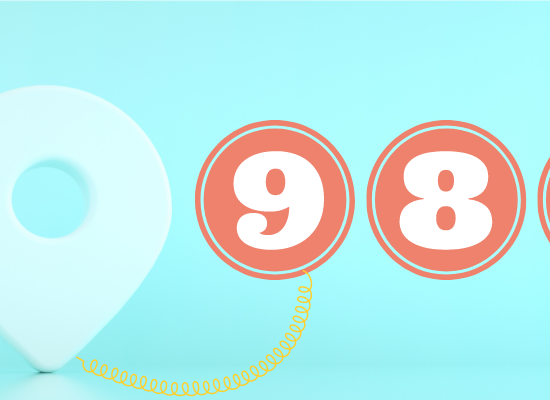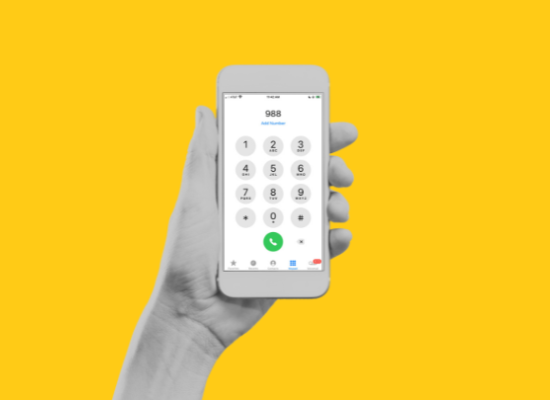
Sue leads the Zero Suicide Institute of Australasia.
It took just two short weeks for the team at Oxford Health NHS Trust Foundation to set up a dedicated helpline in response to people experiencing mental distress as a result of Covid-19 lockdown restrictions.
It was late March-early April 2020 when the Urgent Care Services teams and colleagues in the Improving Access to Psychological Therapies teams sat down together and over that two-week period planned and set up the 24/7 helpline with free access for 1.2 million people across all age groups in the counties of Oxfordshire and Buckinghamshire.
Prior to the establishment of the helpline, there were multiple places to access help services across both counties, but with no centrally coordinated 24/7 service, responses were not always timely, nor did they get the person to the right service at the right time.
The helpline was already included in the United Kingdom’s NHS Long-term Mental Health Plan, but Oxfordshire and Buckinghamshire were not intending to set it up until 2022.
With thousands of people impacted by the virus on a daily basis in the UK, the decision was made to bring forward the establishment of the freephone helpline in anticipation of the increase in demand for mental health support.
Initially, the service ran for 12 weeks. However, contrary to expectations, the demand for mental health services was relatively low during the first lockdown.
However, it escalated as people emerged and, to date, has remained at the higher post-lockdown level. This higher demand was reason to extend the service, but to do this, the team knew they had to transition to something that would be more sustainable.
The decision to move the service to NHS 111 was influenced by the fact that NHS 111 offered better functionality and efficiencies, and embedding the mental health helpline was financially affordable.
Importantly, the Oxford Health team knew that NHS 111 was universally known, so it was easy for public access, and it also offered parity between physical and mental health help-seeking services.
Trained mental health workers mean a better experience for service users
Ms Debbie Richards, Executive Managing Director Mental Health & Learning Disabilities for Oxford Health NHS Foundation Trust, explained, “NHS 111 has been operating for more than 10 years, and it is for urgent help on all health matters not classed as an emergency.”
The communities still have the emergency number 999, and if any life-threatening immediate risk is implied within a mental health contact, 111 operators can connect with 999 to respond. The critical factor is ensuring that the person gets to access the right services at the right time.
“Oxford Health already had a twilight presence in South Central Ambulance Service 111/999 as part of an earlier pilot to ensure specialist mental health advice and navigation was available to people experiencing mental health crisis,” said Ms Richard. As with other areas, across the UK, they also piloted and have maintained a Police ‘Street’ Triage service to assist the police with mental health crisis care.
“What this means is that no matter where a person presents with a mental health crisis, the urgent and emergency care system in the County of Oxfordshire can respond with support for both the individual and the professionals in other services such as police, ambulance, and accident and emergency areas in hospitals,” she said.
A mental health practitioner on the Oxford team noted that being able to collaboratively work with the ambulance service in providing mental health care to people who without the service would continue to struggle with their mental health or be on waiting lists for services and not have any interim support has had a positive impact. “It has shown us a real shift in attitudes in both the general public and professionals in accessing the right care at the right time and how it can make a real difference to someone’s wellbeing,” they said.
The addition of trained mental health workers operating within NHS 111 allows the call handler to patch the person straight through if there is a need for clinical assessment. This offers a much better outcome for the person than having to sit for endless hours in Accident and Emergency hoping to see a clinician.
According to Ms Richards, all this was working well but without sufficient demand to build a business case for 24/7 operation. All that changed with the onset of Covid-19 pandemic. Prior to this, the twilight triage service was averaging 185 referrals into 111/999 a month. In its six months of operation, the new 24/7 service has been averaging 530 calls a month, a three-fold increase.
Ms Catherine Sage, Head of Service, Mental Health Urgent Care, said that the transition of the helpline into NHS 111 happened in December last year. Prior to opening the helpline, the NHS111/999 staff used a computer-driven protocol that would guide them to refer the caller to sources of support that would deliver the best outcome. While the Helpline has transitioned across to NHS 111, the Oxford Health ‘in-house’ helpline number is still in use and diverts to NHS 111. “People can still utilise all previous services; NHS 111 is in addition to those existing services,” she said.
Technology provides a streamlined process for community callers
One of the benefits of transitioning to NHS 111 is the excellent technology platform. “We could not have replicated this within the Trust,” said Ms Sage.
Sitting behind the IT platform is a directory of service which helps the call handler to get the right help for a person’s condition. That means within NHS 111, at the conclusion of the triage process, a person calling with a mental health issue can be immediately directed to a mental health clinician for a more in-depth and accurate assessment. This trusted assessor model means that the person in crisis can get support without having to go through a repeat triage process which makes for a much better experience.
Ms Sage explained: “The high-quality technology system will recognise phone numbers, showing whether the person is a first-time user or a frequent caller showing the frequency with which they have been in contact as well as their individual care plan.” This allows the call handler to filter out their needs which may be different to someone at immediate risk of self-harm. This also helps to ensure that the person gets the right clinical expertise and has a positive experience with the service.
“Importantly, the data gathered through the platform can also be used to learn about demand,” said Ms Sage. It helps to determine which pathways make the best sense for the person, thereby avoiding them having to unnecessarily call 999 emergency services or present to the emergency department. “For repeat callers, we use data to inform which services are more appropriate for the person and work out why prior contacts are not resolving the situation for them.”
Another benefit of operating within NHS 111 is that the caller will also have a physical health screening. While service users may not want to have a conversation about physical health needs before getting to the mental health clinician, it is an opportunity to address any co-morbidities in the context of their mental distress. Understanding contextual factors will allow the mental health clinician to link the person with other relevant services such as housing or substance use.
There is also the opportunity to access NHS 111 online by completing an electronic form. The request is followed up by a mental health clinician making direct contact with the person. This is attractive for young people and for those on the autism spectrum who may find face-to-face conversations more challenging or feel more comfortable initiating help for themselves using this method of contact.
“The inclusion of mental health clinicians within the NHS 111 services means that other health care professionals can call on their colleagues for assistance with a person with whom they are working,” said Ms Sage. This may well be from a non-mental health clinician who is concerned about a mental health issue when responding to some other health matter for an individual.
A child and adolescent mental health service worker expressed their appreciation: “I’ve had quite a few calls with them, and the people I have had contact with have been really thoughtful and collaborative.”
While not formally part of a mental health clinician’s role, another benefit of the NHS 111 service is the opportunity to provide mutual or peer support for colleagues if required. “However, the clinicians are primarily there to support those calling NHS 111 or 999,” Ms Sage emphasised.
Mental health clinicians are trained to support people to manage their own situation
Most interactions through the NHS 111 service are one-off calls, and the team tries as best they can to wrap the call up within one interaction. Around 50% of all calls result in an onward referral. Some of those callers are existing service users, so the team will try to make sure they are followed up by the service with which they are familiar. This is important to help the person avoid repeating their concerns or having to jump through more hoops.
The one-off nature of the service can be challenging for the clinicians who grapple to differentiate between triage and a full assessment. They want to ensure the interaction with the individual is a therapeutic intervention. “It is expected that the conversation plus documentation for onward referral should take no more than an hour – 30 minutes in conversation plus 30 minutes to write it up and complete any other action that is required,” said Ms Sage.
The clinicians get extensive training when joining the service and the Trust is very fortunate to have highly experienced leaders in suicide prevention who deliver the training. The aim is to build skills in supporting the person to develop self-management techniques and safety planning, to think for themselves, and to manage their own situation. Being able to assist the person in this way is why there is not always the need to refer the person to another service.
Ms Karen Lascelles, a nurse consultant with the Oxford Health NHS Foundation Trust, has specialised in suicide prevention for 15 years. Karen works across the Trust with the clinicians delivering training supervision and skills development. Since the mental health line was established in 2020, Karen has provided risk assessment, formulation, and safety planning to the team and continues to provide regular reflective practice sessions where clinicians can focus on shared experiences and challenges with the aim of professional growth.
“One of the limitations of current pre-registration training is that it seems to deliver the same suicide prevention messages as those developed for the general public, which are important but universal. Health professionals working with people who may be suicidal need a much more nuanced and detailed understanding of suicidality.
“This has been addressed by Health Education England and the National Collaborating Centre for Mental Health, which developed guidance on core competencies for self-harm and suicide prevention. The development of these competencies involved a broad group of stakeholders, but there is still work to be done on their application into programs. Locally, we offer mandatory clinical risk assessment and management training and additional training on working with suicidality,” explained Ms Lascelles.
Every care was taken in the design of the service
Ms Richards said the work done over the last year is an extraordinary achievement and the results speak for themselves. Almost half of all calls are resolved by providing the individual with safety planning and self-management techniques. Only 15% of calls require onward referral to another mental health service, with a further 30% being referred to another agency for support. Only 1% of mental health calls to NHS 111 are now being referred for immediate emergency mental health service.
“The planning teams considered every scenario and what responses would need to be put in place to ensure that safety sat at the heart of the helpline service,” Ms Richard said. “What this means is that our communities and our staff can be confident that the very best evidence has been used to guide the building of the service.” Most importantly for those who use the service, she said there is a far better experience than was available before the helpline was set up.
As one service user confirmed, “It was really nice to talk to you yesterday. You were so kind and supportive and really helpful. I felt a little bit better after talking to you. So, a very big thank you for that. And thank you for helping me to get the right help now.”
Sue Murray, International Correspondent
A health promotion advocate in Australia dedicated to improving the health and well being of all people. Throughout her career, she has focused on health for the community and has expertise in communications, education, and organisational development.
Sue currently leads the Zero Suicide Institute of Australasia, which aims to support the healthcare system to understand and more effectively manage those who are vulnerable to suicide and suicidal behaviour.








